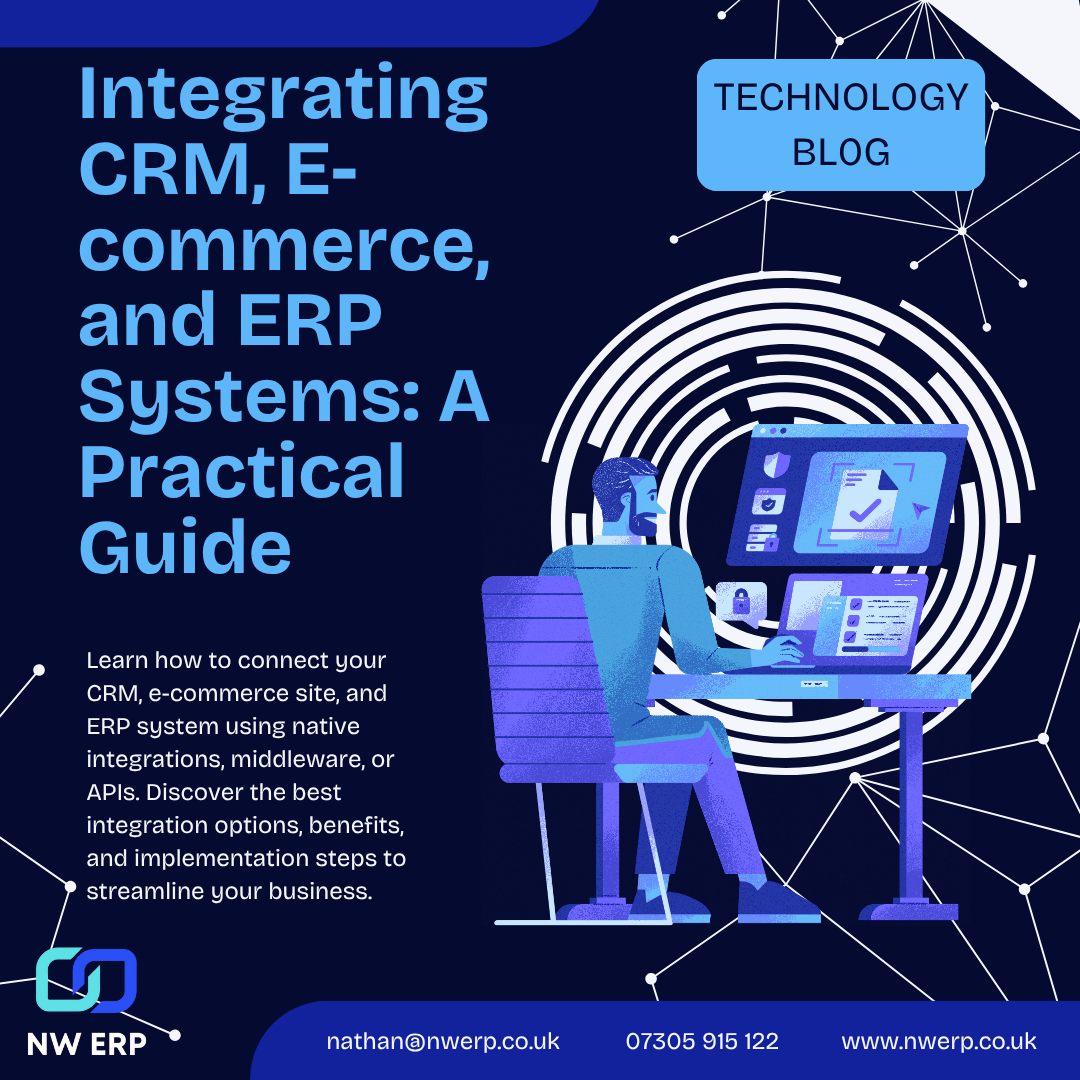 3 July, 2025
3 July, 2025
If you’re managing customers, sales, stock, and finances across multiple systems, you’re not alone. Many SMEs run into operational headaches because their CRM, e-commerce, and ERP platforms aren’t talking to each other.
In this guide, we’ll explain:
Whether you’re in retail, manufacturing, print, or distribution, this will help you build a connected, scalable setup.
When your systems don’t talk:
By integrating your CRM software, e-commerce platform (like Shopify or WooCommerce), and ERP system (like NetSuite, Business Central or Odoo), you can automate workflows, reduce human error, and get real-time visibility across departments.
This improves:
Many platforms now offer pre-built integrations between systems. These are easy to set up and work well for common use cases.
Examples:
Pros:
Cons:
Integration Platform as a Service (iPaaS) solutions let you connect systems without writing custom code.
Popular middleware tools:
Use cases:
Pros:
Cons:
For complex needs, custom development gives you full control.
Common use cases:
Pros:
Cons:
| Business Type | CRM | E-commerce | ERP | Recommended Tools |
|---|---|---|---|---|
| Promotional Products | HubSpot, Pipedrive | WooCommerce, Shopify | NetSuite, Odoo | Make.com, Vpress, Celigo |
| Retail | Zoho, Salesforce | Shopify, Magento | Business Central, Unleashed | Zapier, Tray.io |
| Print Services | HubSpot, Pipedrive | WooCommerce | Dynamics 365, Odoo | Custom APIs, Integromat |
| Food Distribution | Salesforce | Custom ordering site | SAP B1, NetSuite | Celigo, Custom Integrations |
Common Mistakes to Avoid
At NW ERP, we help SMEs in the UK and US design and implement robust integrations between CRMs, e-commerce platforms, and ERP systems.
Whether you’re on WooCommerce, Shopify, Business Central, or NetSuite, we’ll help you:
Book a free discovery call and let’s see how we can help streamline your operations.
Have questions about optimising your business with ERP, SaaS, Ecommerce or automation? Looking for ways to cut costs, improve efficiency, or enhance customer service.
Contact us today to discuss your needs and discover how we can help your business thrive.
No Obligation – Just a friendly chat to explore possibilities.
